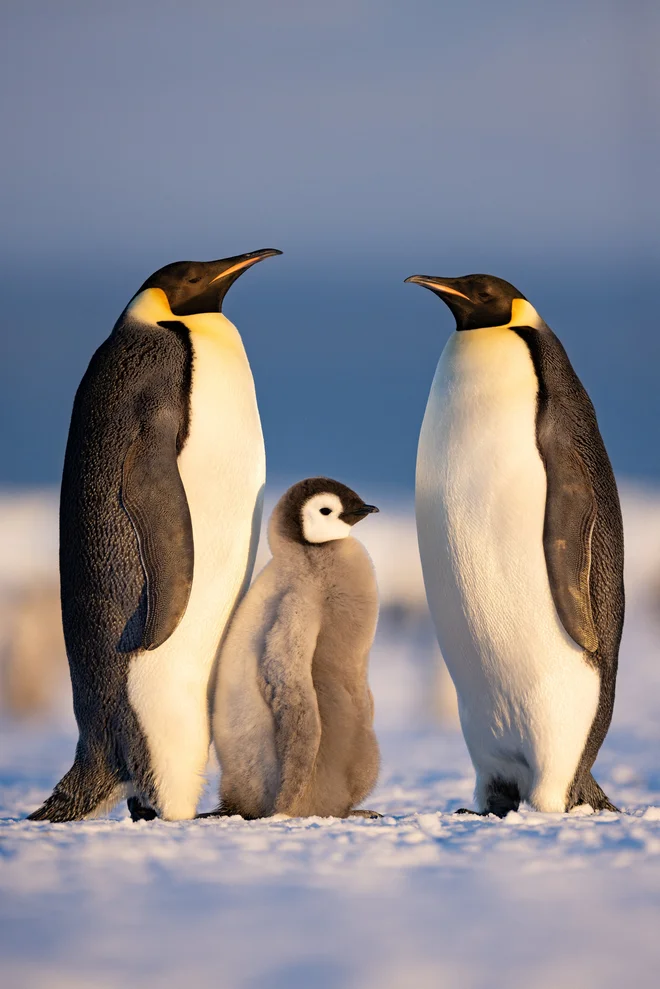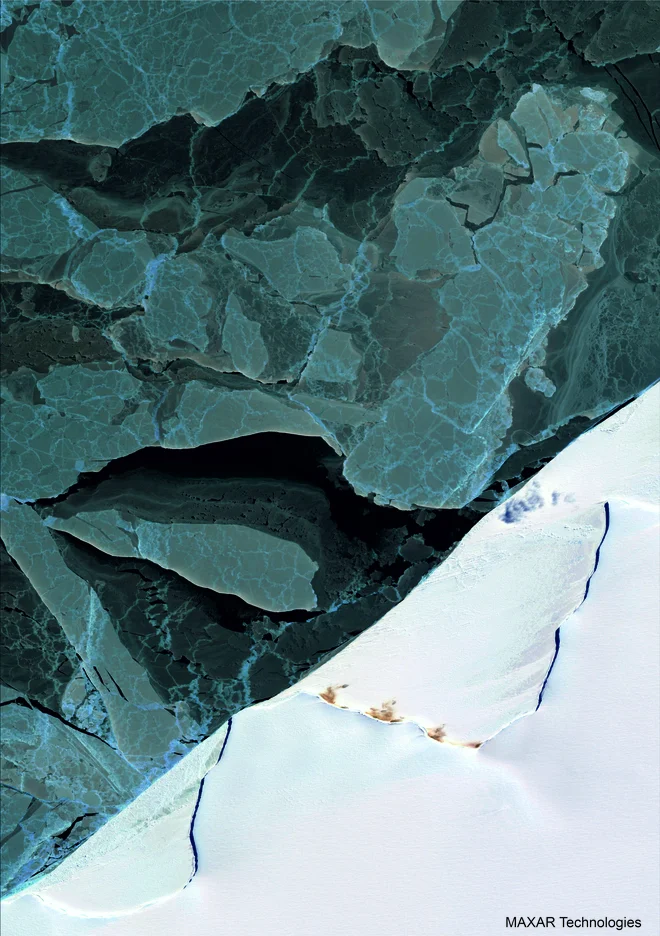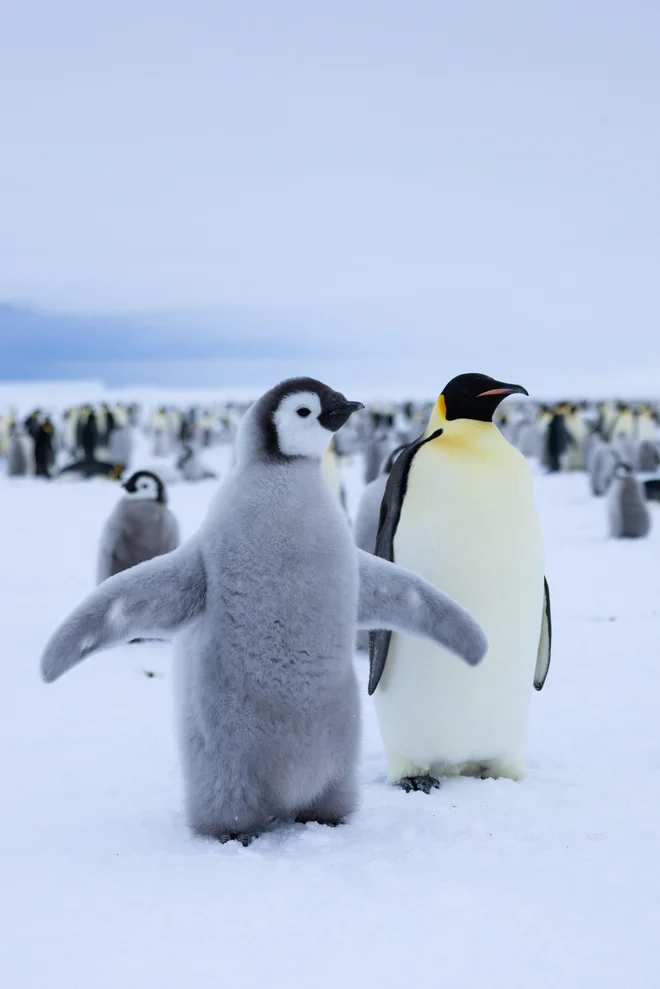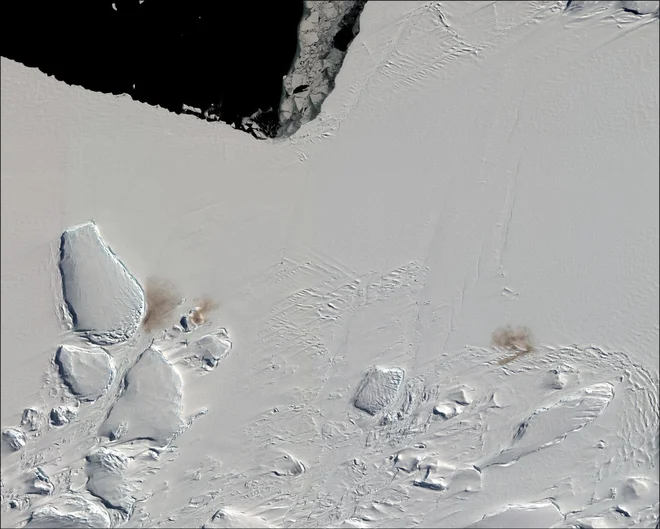The populations of imperial penguins are declining faster than expectations

Population of imperial penguins (Apthenodytes forsteri) In Antarctica, it may be decreasing faster than some of the most black -eyed predictions in the past. One of the key reasons for this is the loss of living space, which shrinks due to climate change.
A new analysis of satellite recordings shows that the number of birds in the area, which includes the Antarctic Peninsula and Weddllo and Bellingshausen Sea and measures 2.8 million square kilometers, decreased by 22 percent in half a decade, from 2009 to last year. At the annual level, the population decreases by average by 1.6 percent. They evaluated the situation of sixteen colonies, representing almost a third of the world’s population of imperial penguins.
The number is much higher compared to previous research relied on satellite recordings between 2009 and 2018. These showed a 9.5 % reduction in population, characterized by continuous reduction by 2016, followed by a slight recovery by 2018. Antarctica. According to a 2020 study, there are about 250,000 pairs of imperial penguins in Antarctica, using 66 nesting sites around the perimeter of the continent.
A penguist’s parent with a puppy who does not yet have waterproof feathers that allow him to survive in cold waters. Photo: National Geographic/Bertie Gregory/Reuters
“There is a lot of uncertainty in our work and what we have found in our count is not necessarily characteristic of the rest of the continent. But if it is, this is worrying because the decline is worse than the worst forecasts we have for the imperial penguins in this century, « emphasized Peter Fretwell, lead author and researcher at British Antarctic Survey (bass).
The situation is « probably about 50 percent worse » than the most pessimistic estimates of the current population obtained through computer modeling, he added. “This decline goes beyond the forecasts of models based on high values of greenhouse gas emissions. It is unclear whether the area we have analyzed reflects the situation throughout the continent, but our results emphasize the need to expand the analysis to the whole of Antarctica to determine whether these trends are also reflected elsewhere, « the study published in the magazine wrote in a magazine published Nature Communications: Earth & Environment.
According to computer -modeled forecasts, the species will most likely be extinct by 2100 if the atmosphere continues to heat up as before. The imperial penguins reproduce the southernmost than all kinds of penguins and form large colonies on the sea ice surrounding the Antarctic continent. They depend on seasonal sea ice, which quickly disappears due to the warming of the atmosphere and oceans. This is a place for these birds where puppies mate and raise. The ice should be solid about eight to nine months a year. In recent years, some colonies have lost all the germ because the ice had collapsed under them and the puppies fell into the sea before they were old enough to deal with the cold ocean.

A satellite recording of the colony of imperial penguins in the Halley Bay bay. Photo: Maxar Technologies
Imperial penguins and their closest relatives, the royal penguins, have unique reproductive cycles with a long period of breeding puppies. The egg heats the male in winter, while the female goes on two months of fishing. When he returns to the colony, the puppy nourishes with the food, then the parents exchange food.
“The decline seems faster than computer models predict. This means that we need to take into account other factors, not just a loss of habitat. The only way to see a turnaround in the population is to reduce greenhouse gas emissions, « emphasized Dr. Phil Trathan, co -author of the study and a deserving member of the bass. Namely, other factors in the intertwined environment are related to the main cause. These are changing patterns of storms, snow and other rainfall, increased competition for food, because other animals are moving, while penguins are more exposed to predators such as seals and orcs that exploit the more open sea, the bass said.

On the low and flat surface, the female pulls out the egg, which is then rolled by the male, and then they then boil the puppy for one year. Photo: National Geographic/Bertie Gregory/Reuters
Urgent high resolution
Counting penguins from space is not easy and is based on an estimate of the number of specimens in large flocks that were detected on high -definition satellite recordings. But this approach is the only way for scientists to estimate the number of penguins, as they live in such remote places that access for humans is almost impossible or too dangerous. The study used satellite recordings from October and November before the area is a winter theme.
Fretwell also stressed that other types of satellite technologies, radar or thermal painting, would be well used in further research to capture populations in the darker months, and the study area studied should be expanded. « We need to look at the rest of the population to see if these worrying findings apply to the whole continent, » he said, but added that the studies studied were representative.

Satellite clip of colonies near the mountain of Dawson Photo: Maxar Technologies
Although the picture is quite bad, it is still time to help penguins. « We are likely to lose a lot AFP said Fretwell. Penguins are one of the symbols that show how severe climate change are. “Their disappearance is not influenced by other human activity, such as fishing, habitat contraction, pollution. Temperature rise is to blame, so the ice is melting on which they reproduce and live. And this is a direct consequence of climate change. ”According to him, it is possible that penguins could move a little further south to colder regions, but it is not clear how long they would last there.








